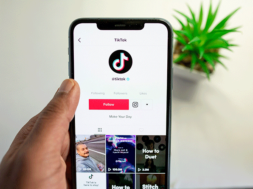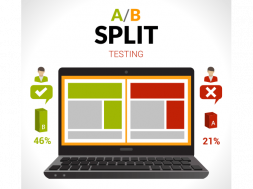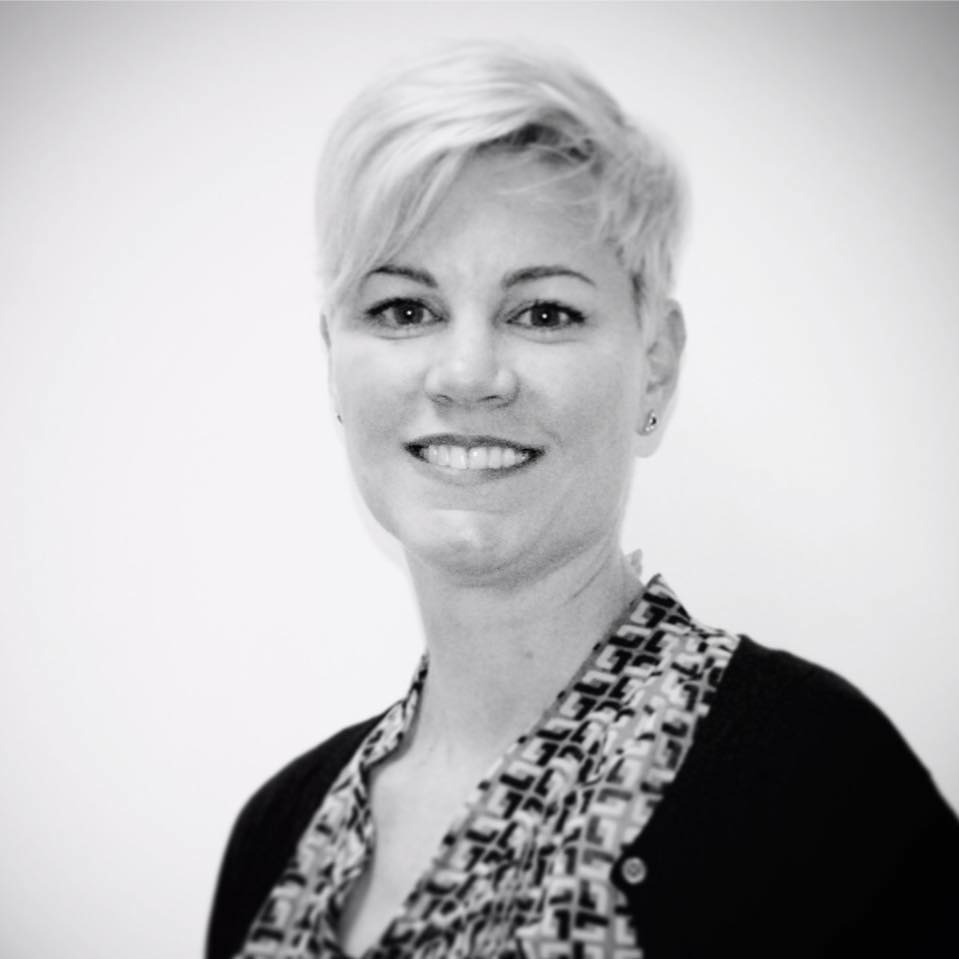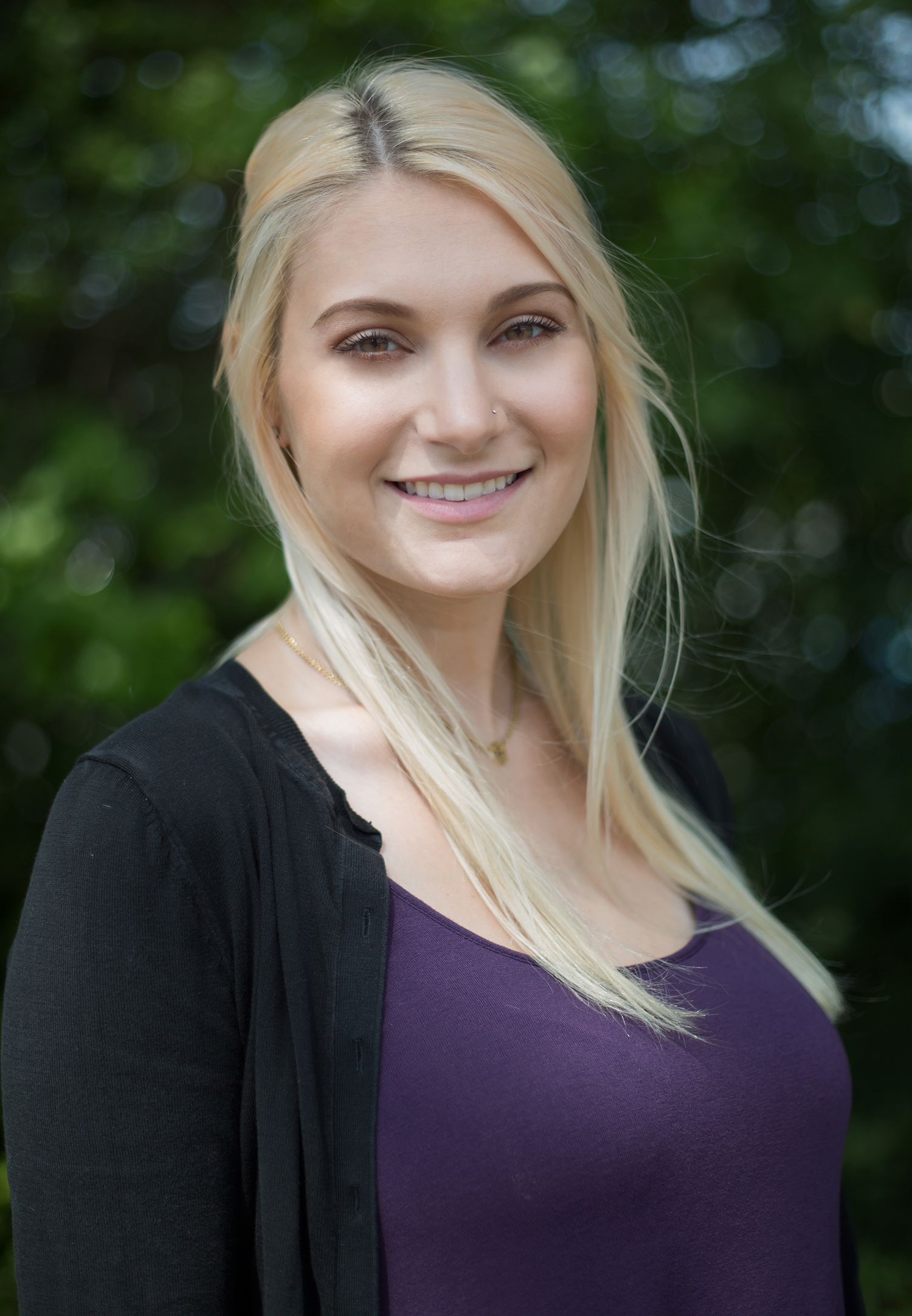
Written from an Interview with Donna Nicholson, Director of Integrated Media and Content Development, and Sofia Anzalone and Marc Dipasquale, Social Media Coordinators, Berkeley College
If you’re a university trying to get the attention of millennials and post-millennials or Generation Z, you’re likely using social media such as Facebook or Twitter to reach out to them. But Snapchat may be your better bet.
According to We Are Social Media, Snapchat is the network for teens and young adults, as well as those ages 25-34. If fact, that older segment is growing twice as fast as those under 25.
But the two groups use the app differently. Generation Z uses the app to keep in touch with their closest friends in a more fun and spontaneous way. While 73 percent of millennials send snaps and stories to their friends, according to We Are Social Media, they also like to discover content through the app. Approximately 54 percent follow celebrities, 47 percent follow brands and 50 percent follow people they have never met such as influencers.
Consider these statistics from We Are Social Media, and you’ll see why using Snapchat might be a smart move to help you recruit college students or connect with your current students:
- 30 percent of teens rank Snapchat as their most important social network
- Users 25 and under visit Snapchat over 20 times per day
- 60 percent of smartphone users between 13 and 34 are Snapchatters. Of the monthly U.S. users, the largest demographic is 18 to 24 year-olds, at 37 percent. That is followed by those ages 25 to 34, at 26 percent.
According to Omnicore, a healthcare digital advertising and marketing agency, more than 1 million snaps – photos and videos – are created daily and the average user spends 25-30 minutes per day on Snapchat. In addition, 71 percent of Snapchat users are under 34 years old, about 70 percent are female, and 30 percent of U.S. millennials use Snapchat regularly.
For years, Berkeley College, with campuses located in New York and New Jersey, as well as online, has used social media such as Facebook, LinkedIn, Instagram, Twitter and YouTube to connect with current and prospective students. But it added Snapchat, a photo- and video-messaging app, to its social media strategy about a year ago and has found it to be very effective, especially in engaging current students.
Donna Nicholson, Director of Integrated Media and Content Development at Berkeley, said the college utilizes its social media platforms as a tool to promote campus events and programs. “We work with every department at Berkeley and have been very successful at creating meaningful engagement with our student population.
Nicholson coordinates the college’s social media and content development efforts, including the development of commercials for broadcast and video/photo content for social media and the website. At times that also means handling issues when students take to Twitter rather than calling their advisers, usually for questions on financial aid or school closings due to weather. “We make sure the students get to the right department or get the assistance they need,” she said. “In today’s world, social media is the first communications tool that students turn to. We serve as a liaison with multiple departments.”
Snapchat fun facts
- More than 400 million Snapchat stories are created daily.
- It would take you 10 years to view all the photos shared on Snapchat in the last hour.
- By the time you’d viewed those, another 880,000 years’ worth of photos would have been shared.
- More than 20,000 photos are shared every second.
Source: Omnicore
Sofia Anzalone and Marc DiPasquale, both Social Media Coordinators at the Berkeley College, handle posts on Berkeley’s social media channels, as well as copywriting and video editing.
There was a “feeling out” phase when they first started using Snapchat, DiPasquale said. “We wanted to see what worked well and what didn’t work,” he said.
To do that, they kept in mind how Snapchat works and how long snaps last. Individual snaps last anywhere between 1 and 10 seconds, Anzalone said, and snaps posted in your stories last for 24 hours … unless you save and download them.
DiPasquale said they promoted Snapchat throughout their different campuses – they have five New Jersey campuses and three New York campuses – and their big rollout was during commencement. “We were snapping photos of students with caps,” he said. “We had students say a few messages and had about 15-20 snaps throughout the commencement ceremony.”
Since last year’s commencement, they have been using Snapchat in various ways. For instance, they have done Snapchat “takeovers” with students from their campuses. “Students start the day off by introducing themselves, and throughout the day they send pictures or videos of different events that go on at the campus or in their classes,” DiPasquale said, adding that those snaps have helped to give the college a large following. To inform students of the snaps and to get them to tune in, they promote Snapchat on all their other social media channels and even send emails to current students.
Berkeley has also used Snapchat to promote certain students and their activities, such as Emily Pross. “She’s the No. 1 female longboard champion in the world,” Nicholson said.
“She’s been showing her life through Snapchat to our audience. She’s traveling all over the world to race and she’s showing how she balances her race schedule along with her online classes.”
Another student they promote on Snapchat is a residential adviser at their Westchester campus. “She provided a unique view of what student life is like,” Nicholson said. “She has a voice that resonates with current and prospective students.”
To ensure that the students’ snaps are appropriate, Berkeley gives the students specific guidelines to follow, and each student must sign a waiver that they agree to those guidelines, Nicholson said. The guidelines include things like no pictures of homework, no logos from other brands, and no profanity or questionable photos.
“We’ve developed relationships with these students so we do trust them,” Nicholson said. “We start students out writing a couple of blogs for us so we get a sense of who they are. They also come highly recommended from Student Development and Campus Life or from a professor. We do follow along throughout the day. If there’s anything questionable, we can quickly take it down.” That hasn’t been necessary to date, she added.
Students are given unique and specific log-ins to use for that day. “If there is a worst-case scenario where a student tried to lock us out, we’d just unlock the platform since everything is tied back to our staff email,” Anzalone said. While Instagram stories allow you to view things before posting, Snapchat does not. “It’s more spur-of-the-moment,” she explained.
While most of their efforts on Snapchat have been geared to current students and alumni, they next plan to engage faculty via the social media app. “We do have some faculty who are savvy with social media,” Nicholson said. “We’ll be looking to them and the campus operating officers to serve as social media advocates next.”
DiPasquale said they create unique location-based geofilters, or creative overlays that capture where you are or what you’re up to, allowing Snapchat users to add graphics or sayings to their photos for different events such as for commencement, open houses or new student orientations.
 “For instance, we had a filter made that said ‘Congratulations Graduates, Class of 2017’ that people were able to put on their commencement pictures before they sent them out,” Anzalone said. That filter made over 50,000 impressions. In addition, they have a partnership with the New Jersey Devils, a professional ice hockey team based in Newark, New Jersey. “On our sponsor nights when we’re being acknowledge, we always put out a filter for those as well,” she said.
“For instance, we had a filter made that said ‘Congratulations Graduates, Class of 2017’ that people were able to put on their commencement pictures before they sent them out,” Anzalone said. That filter made over 50,000 impressions. In addition, they have a partnership with the New Jersey Devils, a professional ice hockey team based in Newark, New Jersey. “On our sponsor nights when we’re being acknowledge, we always put out a filter for those as well,” she said.
Anzalone said they create filters using Adobe Photoshop and then upload them on Snapchat’s website for a cost that ranges from $5 up.
“It depends on how large of a square footage that you’re looking to reach,” explained Nicholson. For example, in New York City it’s hard for us to get filters because everyone on every corner has his or her own filter. So you’re fighting for that virtual space …”
Snapchat is easy to set up; you set it up like any other account, they said. The only problem that could arise is if someone already has the username you want to use.
“That’s the issue we ran into,” DiPasquale said. A prior social media director set up the account in anticipation of using Snapchat at Berkeley, but then left and the current team couldn’t access it. “We had to reach out to the Snapchat team and provide some background information,” he said.
Nicholson added that their compliance department ultimately had to write a letter stating that they owned the name, which finally allowed them to get access to the account.
Snapchat allows for advertising, but Berkeley hasn’t used the app yet for that purpose. “We’ll definitely look into it, but for now, we’re trying to keep it as an engagement tool and as a way to round out our social media platform,” Nicholson said.
As social media coordinators, both Anzalone and DiPasquale manage Berkeley College’s Snapchat account. Only when they give access to students, such as in a takeover, can students post, Anzalone said.
The advantage to colleges using Snapchat is that the majority of their students are the ones who use it. “They’re all on Snapchat,” Nicholson said. “It’s the biggest platform and continues to grow.”
Snapchat also shows what’s going on now, and that appeals to millennials and Generation Z students. “If a student on your campus is doing a takeover and showing something that is happening, students can decide to walk over there and engage with whatever is happening,” Anzalone said.
However, since it doesn’t have a feed, and not just anyone can view the posts, it’s difficult to measure Snapchat’s success. “Right now there’s not an in-depth analysis on analytics like the other platforms,” DiPasquale said. “You’re able to just see views, or how many people took a screenshot of a certain Snap.”
You can see how many people are following you, Anzalone said. “What’s cool is when you submit a filter, you get a whole range of analytics 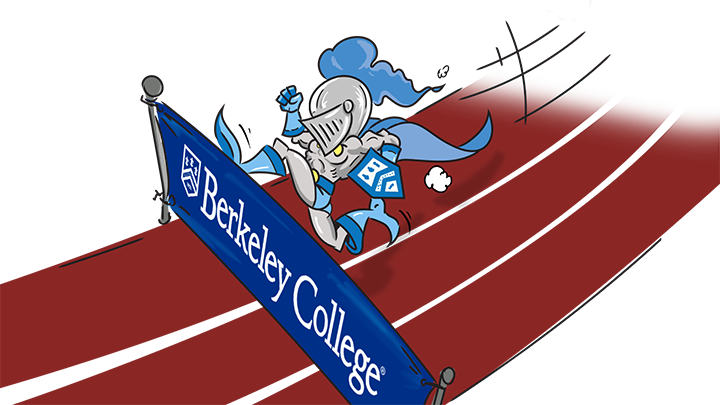 back based on how many people have viewed your filter, how many people actually used it, and then based on the people who used it and sent it, how many impressions it received.”
back based on how many people have viewed your filter, how many people actually used it, and then based on the people who used it and sent it, how many impressions it received.”
Nicholson said they have come up with benchmarks and key performance indicators to judge their success with Snapchat. “We just go month-to-month and story-to-story,” she said.
Based on how many people view your story, you’re able to get a good sense of how many people are following you, DiPasquale said. “If it’s an active user on Snapchat, you’ll also get a good understanding of that.”
Snapchat can also be used as a recruitment tool, especially if current students have a lot of followers who are recent high school graduates or still in high school. “Just seeing their peer on our Snapchat feed could influence them to take another look at our school,” Nicholson said
But it’s difficult to say how many prospects Berkeley University is getting based on its Snapchat account, she added. “We know it’s valuable to be this space, but it’s hard to really quantify.”
Each social media app offers its own distinct advantage.
DiPasquale said Facebook is important for the university because it has a separate internal audience in terms of faculty and staff who follow the college.
Berkeley uses LinkedIn to showcase the faculty, student and alumni success stories, as well as events, Nicholson said. “Whenever we do anything with charities, we post a photo or promote it beforehand to try to get people to join us or to make a donation. Any news that’s happening at the college we share there.”
Berkeley also does some paid advertising on LinkedIn, she said, as well as promotes their MBA program there. The college also offers other master’s, bachelor’s, associate’s and certificate programs.
“But in terms of engagement, likes and comments, Instagram is the most successful,” DiPasquale said, noting more of the student population is on Instagram.
Berkeley likes to post campus photos from different events on Instagram, Anzalone added. “For instance, for commencement we posted pictures of graduates, a collage of graduation caps and confetti. It’s really just anything that is visually appealing.”
They also tend to utilize trending phrases like #icecream on National Ice Cream Day, Nicholson said. “We will make sure we take a photo of an ice cream cone in front of one of our campuses. Those type of posts always do really well because it’s just a fun way to show that we’re involved with what’s happening in the larger picture. It’s a human interest that everyone can relate to.”
When to post is just as important as how much to post and on what social media platform to post. “Each platform is a bit different, but we post at least daily on every platform,” Nicholson said. In fact, they post at least twice a day on both Facebook and Twitter.
“We try to spread out the posts and allow them to pick up reach,” DiPasquale said. “You don’t want to put them out an hour or two apart. We try to schedule one in the early afternoon and one at night, or one in the morning and one at night, just so people that aren’t on their phones or computers during the day can still see it at night.”
Most of their posts are actually planned out three months in advance based on seasons and things happening at the college, such as open houses or other student events, Nicholson said. “Then we fill in with those national hashtag days and other events,” she said. “But you also need to go with the flow. We check what’s trending and we quickly get on the trending bandwagon and post something to do with it if it aligns with our messaging. We don’t jump on things just to do it; we make sure that it aligns with the bigger picture.”
For other universities looking to add Snapchat to its social media platform, they suggested you decide what you hope to accomplish.
Snapchat at a glance
- Former Stanford University graduate students created the photo- and video-messaging app in 2011 as part of a class project. Their aim was to create an app that allowed users to share selfie images or videos that were short-lived and self-deleted.
- It first launched under the name Picaboo as an IOS-only app. In 2012, it launched an Android app.
- In October 2013, it introduced a “My Story” feature, letting users compile images of what was going on in their lives, known as “snaps,” into chronological storylines accessible to all of their friends.
- The “Stories” functionality was later expanded to “Live Stories,” letting users at on-location events across the globe to contribute snaps to a curated story available to all Snapchat users.
- In January 2015, Snapchat introduced “Discover,” a designated area within the app focused on ad-supported short-form content from major publishers.
- Two years later, it announced a new, global “Our Story” feature, letting all users contribute snaps at any time. An “Official Stories” designation verifies the accounts of notable public figures.
- Snapchat has also introduced “Memories,” allowing users to save their snaps and story posts to a private storage area; “Geostickers,” city-specific stickers that can be placed on snaps and messages; and “Custom Stories,” which lets users decide who can add to their story and who can view it.
- As of May 2017, Snapchat had 166 million daily active users. Monthly active users total more than 300 million.
Source: Wikipedia, Omnicore, Snap.com
“Approach it the same way you approach any other platform,” Nicholson said. “Have guidelines in place and make sure students agree to it. Have everyone sign off, and monitor it closely.”
She said it is also helpful to start out small. “Just test the waters.” Then review your posts to see how they were received and make changes as needed.
Ask students what they want to see on Snapchat or follow students to see if they follow celebrities and people like that, DiPasquale said. “That will give you a sense of what kind of content they are interested in; you don’t want to create an account and be posting if nobody is there.”
Like any other platform, you have to make sure to keep it fresh and updated, Nicholson said. “You don’t want to have a dead page,” she said. “It just doesn’t look good.”
The main benefit to using Snapchat is that it is an engagement tool, Nicholson said. “It shows that we are part of that space and it gives students another glimpse into what we offer. It gives a good, stripped-down representation of student life and what is happening at your school, rather than more of a produced marketing piece.”
It also allows you to reach a different audience, DiPasquale said. “You’re not going to post on Snapchat the type of things you post on Facebook or LinkedIn,” he said. “You share an article on Facebook or LinkedIn, but on Snapchat you’re pretty much putting up a 5-10 second video of something funny.”
And that makes it a great platform to reach your younger students, Nicholson said. “It’s a fun thing for them to see how their college is represented in that space,” she said. “It’s definitely a great platform and we’re excited to be on it and looking to do more and try new things.”
DONNA NICHOLSON is the Director of Integrated Media and Content Development for Berkeley College. She has a Bachelor’s of Communications degree from Ramapo College and was awarded a mini MBA certification from Rutgers Business School in Social Media Marketing. Over the past three years she has helped Berkeley College expand their social media presence and content marketing strategy. Before joining Berkeley College she worked in broadcast television as a producer for CNBC and NBC’s Private Financial Network.
Contact Information: Donna Nicholson // Director of Integrated Media and Content Development // Berkeley College // 201-291-1111 ext 5146 // dnn@berkeleycollege.edu // BerkeleyCollege.edu
SOFIA ANZALONE is currently a Social Media Coordinator for Berkeley College. She graduated from Montclair State University in 2015 with a degree in Organizational Communication. She joined the marketing department after working for a year in Media Relations for the College. Sofia previously interned for U.S. Senator Cory Booker in Newark, New Jersey. Since joining the team, she has focused on content creation, specifically growing the College’s presence on Snapchat through the use of sponsored Geofilters.
Contact Information: Sofia Anzalone // Social Media Coordinator // Berkeley College // 201-291-1111 ext 5155 // sofia-anzalone@berkeleycollege.edu // BerkeleyCollege.edu
MARC DIPASQUALE is a Social Media Coordinator for Berkeley College. He is an alumnus of Berkeley, receiving his Bachelor’s in Marketing in 2014. Since joining the team, he has helped manage and grow the multiple platforms the college is on. His favorite social media platforms are Instagram and Snapchat!
Contact Information: Marc Dipasquale // Social Media Coordinator // Berkeley College // 201-291-1111 ext 5152 // marc-dipasqua2@berkeleycollege.edu // BerkeleyCollege.edu


